🎒 Becoming Emotion Scientists: Mapping Feelings with Grade 4–6s
My first time working with kids… and how they blew me away
This season, I had the joy of hosting another cohort as an Artist in Residence with AIRS (Artists in Residence in Schools) at Lord Beaconsfield Elementary. Over five weeks, I collaborated with three classes of Grade 4–6 students to explore a question that’s close to my heart:
What if our feelings are data?
Not the kind you graph in spreadsheets, but signals—clues—that help us better understand ourselves, our personal histories, and the world around us. We started by building emotional landscapes using ink, paper, and our imaginations. From the “Cave of Depression” to the “Isle of Edgy,” students charted their internal terrains, guided by questions like: What’s a place you go to when you feel overwhelmed? What’s somewhere that makes you feel peace?
Each student created their own “data collector”—a tool to track emotional responses and translate them into visual language. Titles like “When Life Ruffles Your Feathers” and “There’s Still Light in the Dark” reflected the depth, insight, and whimsy of their inner worlds.
As the weeks went on, new lands emerged—blending joy, grief, hope, fear, and everything in between. When the residency neared its end, students designed fantastical vehicles to travel across their emotional geographies. There was the “Train of Peace,” sidecars powered by imagination, and even rocket farts that could launch you over a volcano.
In groups of three, students visited one another’s worlds, threaded together with literal thread and collaborative story dice. Together, we imagined the challenges they might encounter along the way: being poisoned by a potion that made you believe you didn’t belong at the Lagoon of Sadness—only to discover a hidden window that revealed you already did. Or a River of Peace, split in half, and restored with the magic of jelly beans.
Together, we became emotion scientists—using movement, mark-making, and storytelling to chart and share both the visible and invisible.
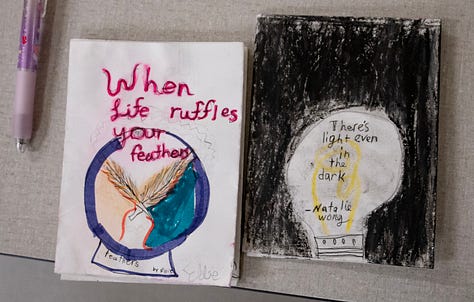
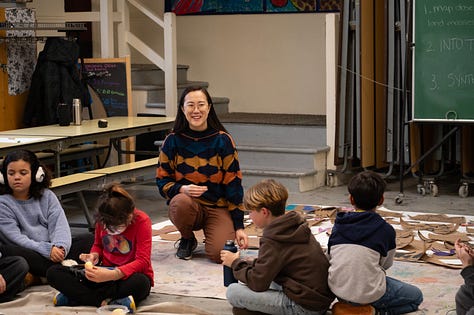
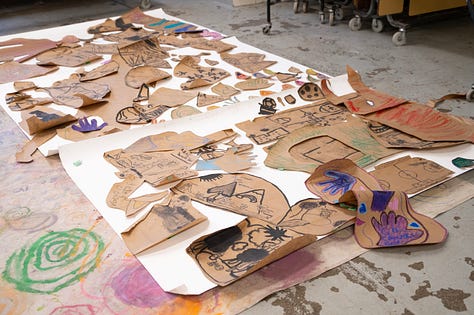
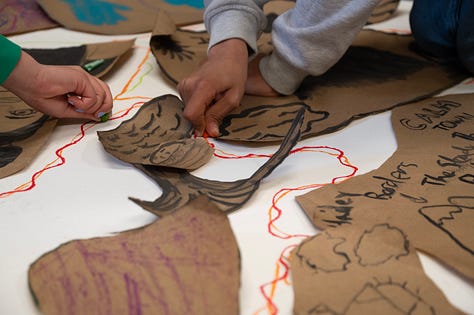
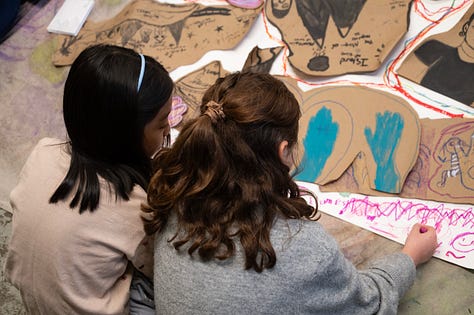
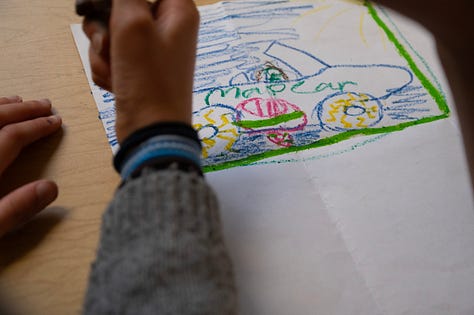
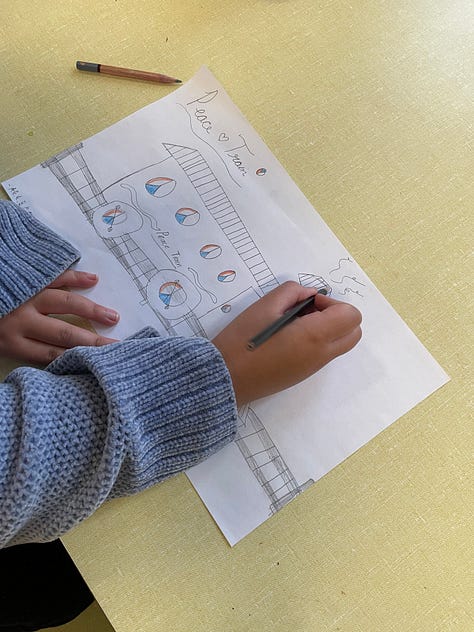
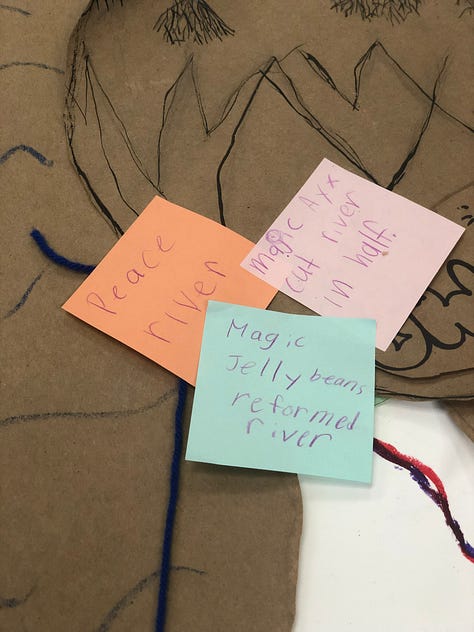
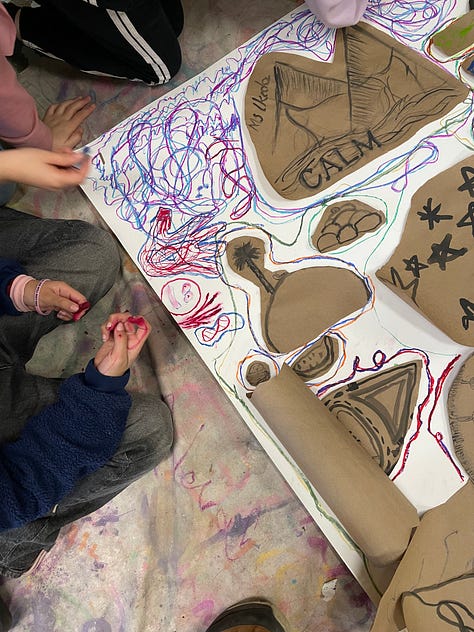
This was my first time ever working with children—and they totally blew me away.
I watched them pull in wolves and eagles from their culture stories, solve abstract problems with full-hearted creativity and delightful absurdity. It was a joyful reminder of the freedom we all once had to express ourselves without hesitation.
It was also a completely new way of working for me—learning to adapt to different learning styles, attention spans, and developmental stages in a group of 30. I quickly realized that short, clear instructions were key. But once they were off and running, there was no reeling them back in. Somewhere along the way, I became part P.E. teacher, part artist—exploring big ideas through physical games, metaphor, and movement.
And even in moments when I felt like I had no idea what I was doing, there’d be a quiet moment—a student sharing something thoughtful, tender, or brave—that reminded me of the point. That maybe, they’ll walk away from this knowing that all parts of them—the messy, curious, silly, and serious—are valid. And that those parts are worth listening to.
Thanks for reading 💫
If you're interested in emotional mapping, creative facilitation, or arts-based learning, I’d love to hear from you. Leave a comment or drop me a note—I’m always up for a chat.
#ArtsEducation #AIRSResidency #EmotionalMapping #ArtistInSchools #CommunityArts #VancouverArtist





So gorgeous 🥹